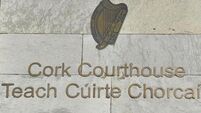Experts to ‘virtually raise’ Titanic with detailed 3D map
The expedition to the site two-and-a-half miles beneath the North Atlantic is billed as the most advanced scientific mission to the Titanic wreck since its discovery 25 years ago.
The 20-day expedition is to leave St John’s, Newfoundland, on August 18 under a partnership between RMS Titanic, which has exclusive salvage rights to the wreck, and the Woods Hole Oceanographic Institution in Massachusetts.
The expedition will not collect artifacts but will probe a two by three-mile debris field where hundreds of thousands of artifacts remain scattered.
Some of the world’s most frequent visitors to the site will be part of the expedition along with a team of top underwater scientists and organisations such as the National Oceanic and Atmospheric Administration.
Organisers say the new scientific data and images will ultimately be accessible to the public.
“For the first time, we’re really going to treat it as an archaeological site with two things in mind,” said David Gallo, an expedition leader and Woods Hole scientist.
“One is to preserve the legacy of the ship by enhancing the story of the Titanic itself. The second part is to really understand what the state of the ship is.”
The Titanic struck ice and sank on its maiden voyage in international waters on April 15 1912, leaving 1,522 people dead.
Since oceanographer Robert Ballard and an international team discovered the Titanic in 1985, most of the expeditions have either been to photograph the wreck or gather thousands of artifacts, like fine china, shoes and ship fittings.
The team scientists want to get the best assessment yet on the two main sections of the ship, which separated during the sinking and now lie one-third of a mile apart and have been subjected to fierce deep-ocean currents, salt water and intense pressure.













